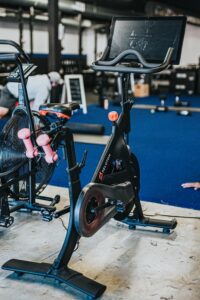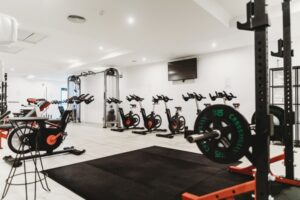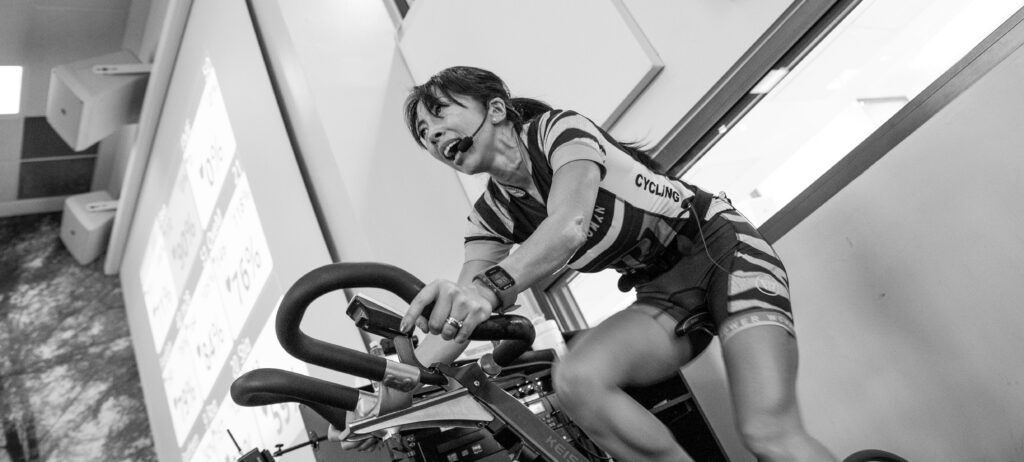How Indoor Cycling can help your Outdoor Cycling Performance
With a lot of different sports, you can have the option of playing both indoors and outdoors. For example, with sports like volleyball, tennis, track, soccer, football—even swimming—can all be done in both types of conditions. This not only helps keep all kinds of athletes interested and moving, but it can also create a ton of benefits when it comes to competing and training, no matter what the weather.
When it comes to cycling, it’s the same thing! There is both indoor cycling (stationary bikes, i.e. a spinning class or indoor training) and outdoor cycling! Having the option between being able to train, perform, or even race in both an outdoor and an indoor setting can be a very attractive thing for most athletes. For example, even the most dedicated cyclists might not be so keen on training or riding when it‘s snowing! Plus, being able to avoid icy and dangerous roads or routes while still keeping in shape is another huge plus.
However, when comparing the two—both indoor and outdoor—one of the major differences in indoor and outdoor cycling is, you guessed it, that in outdoor, you are actually outside of your house and out on a trail or on the road. It is actually being outdoors. Bicycling outdoors in a real-world environment means that you’re going to have to be cycling through and with the different elements—from weather to bumpy roads (literally), and other bikers or motorists on the road. This may require more equipment, different kinds of clothes, and a more thought-out overall process, instead of just jumping on an indoor bike and beginning your workout.
However, despite these differences—and it’s pretty safe to say that an indoor cycle and an outdoor cycle are quite different in a number of regards—the two of them go hand-in-hand and are quite helpful when training, in general.
 No matter how different they are from one another, one thing’s for sure—even though you may think it’s two different ball games, indoor cycling can definitely help your performance outdoors on your bike (and visa versa). No matter if you‘re an amateur cyclist, a professional or if you‘re just looking for a bit more of information, we‘re here to help you with that.
No matter how different they are from one another, one thing’s for sure—even though you may think it’s two different ball games, indoor cycling can definitely help your performance outdoors on your bike (and visa versa). No matter if you‘re an amateur cyclist, a professional or if you‘re just looking for a bit more of information, we‘re here to help you with that.
In this article, we’re going to go through a few different ways that indoor training can transition well to outdoor training and how you can adapt your indoor training to best benefit your outdoor cycling.
At the end of the day, you’re going to be working the same muscles.
A bike ride is a bike ride. And although overall you might be getting a better workout outdoors because of the unevenness of the road and how quickly your muscles have to react to those kinds of bumps, you’re still going to be working the same muscles.
So, whether you’re on a road bike or on an indoor stationary bike, you’re going to be calling on those major lower body muscles to be able to push and pull, clip into the pedals, and maximize your power with an entire rotation.
Both types of cycling works on your hamstrings, glutes, abs, and posterior chain, as well as some of the shoulder, bike, and chest when you’re on the handlebars.
Training these muscles indoors can help you work on your strength and endurance for when you’re outdoors. At the end of the very short ride or very long day—whether you’re indoors or outdoors, strapped in or not, you’re still going to end up with a pretty good workout!
Some indoor cycling classes can mimic the structure or experience of an outdoor ride. 
For this kind of thing to work, you’re going to have to make sure to follow the workout exactly as it’s written or the instructor to a “T”. If you don’t then, you’re not going to get a realistic ride.
The way you can easily mimic an outdoor ride while indoors would be by using the same BPMs (beats per minute)—which can help get the revolutions per minute up to speed as you would in the great outdoors.
These RPMs can help you gauge whether you would be climbing up a steep hill, coasting downhill, or riding around on flat roads.
By following an instructor, he or she can help you stay on track with a very realistic ride so you’re getting the same kind of workout that you would if you were outdoor on a tough bike trail or route. Doing this on your own in the gym can be hard—but some indoor bikes are programmed to have certain resistance level increases to mimic that kind of workout.
This kind of workout can help your outdoor performance through endurance, stamina, and discipline.
Your performance can only get better!
Although some may argue that having a balance on your bike can’t be substituted, practicing indoors can only improve your overall performance. Unless you’re training to the point of injury, there’s not much that can go wrong if you’re training indoors as well as outdoors.
There are so many benefits to a good spin class or an indoor cycling session. One of these benefits would be to able to continue biking and continue with your training regimen—no matter the weather!
You can improve your VO2 Max.
And that’s always going to be a plus—as this helps your overall fitness level! The maximum amount of oxygen that you can use during maximum exertion or intense exercise is going to be a pretty good indicator of how in-shape you are.
You can work on improving these numbers while indoor cycling, which can help you perform well in outdoor cycling!
Any road cyclist needs to be able to maintain good form throughout the entire biking season. And biking indoors gives you the ability to recreate the same type of movement and exercise no matter what it’s like outside or if you’re able to actually get on your bike for a ride.
 A Bit About Indoor Cycling
A Bit About Indoor Cycling
Of course, all of these benefits can only come if you’re doing indoor cycling that actually gives you ultimate benefits and maximizes your workout potential!
Since a lot of outdoor cyclists rely on indoor cycling to stay in shape in the offseason, the winter or the rainy season, it’s safe to say that you can also do the same to stay on top of your fitness level.
To help keep you engaged when things may seem a bit boring (not all indoor bikes can have an outdoor simulator)—there are multiple types of indoor cycling available.
One of the most popular programs out there is:
Spinning
Spinning was created to mimic road cycling, this helps you cross-train so you get to work on your endurance, strength, and interval training.
All that matters most with these programs is that you are pushing yourself to increase your heart rate, RPMs, and keeping your workout intense.
Another benefit to indoor cycling when it comes to staying in shape?
It can be great for beginners who are just getting started. With less risk of getting injured than you would have outdoors, the indoor cycling program or fitness class can really help you push past those insecurities and get you on a bike—no matter how “beginner-level” you feel.
These classes have different standards of fitness levels, all riding together in the same program. This might not be possible with outdoor cycling. For example, if you’re a beginner who is just getting started, you might not be able to actually train and keep up with other cyclists of a higher level since they would literally be much farther ahead of you (at a distance).
Indoor cycling keeps it safe, fun, and friendly. It also helps you keep all the necessary numbers like heart rate and calorie count monitored, whereas outdoor cycling might not unless you have the proper gadgets.
You are also in control of your own resistance levels—at all times—on an indoor cycle, whereas if you were outside, then you don’t necessarily have control of the difficulty of the route. This can actually be an advantage that indoor cycling has over outdoor since you’re able to control how hard or soft you push yourself. This can help minimize injury and maximize potential.
You don’t have to worry about mapping out your route, finding your way back home—or going so far in one direction and worrying about not being able to have enough “gas left in the tank” to take you back to where you started.
These among many, are multiple benefits for indoor cycling and can be a huge reason as to why training indoors can be great for you, even if you’re normally an outdoor cyclist.
We hope this article has helped prepare you with some notable insight to help you get on the bike—no matter if you’re indoors or outdoor

